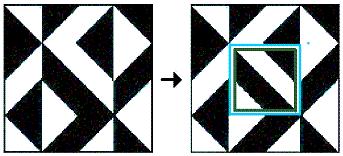|
Finite Geometry Notes
|
|
Construction
principle [1]:
number right --> everything right Given a small, highly symmetrical geometry with n points, look for the same number of points arranged into a highly symmetrical spatial object. Try to merge the two structures such that the symmetries of the spatial object translate into symmetries of the geometry. |
|
Construction
principle [2]:
Given a subset geometry on... n points, try to translate automorphisms
of symmetrical arrangements of n points in the plane or in space into
"good" models of the geometry which exhibit as many of these
automorphisms as possible. subset geometries |
|
|
|
Construction
principle [3]:
Try to extend "good" models of subgeometries of a given geometry to a
"good" model of the full geometry. subgeometry --> full geometry |
|
|
|
Construction
principle [4]:
Try to find models of subgeometries of a given geometry "right in the
middle" of a good model of the geometry. geometry --> subgeometry |
|
Commentary
by S. H. Cullinane:
See The Diamond Theorem, Diamond Theory, and Solomon's Cube.  The proofs underlying properties described in these notes involve extending symmetries of centrally located 2x2 or 2x2x2 subgeometries to their larger 4x4 or 4x4x4 supergeometries. |
References [by Polster]
[1] A. Beutelspacher.
[2] A. Beutelspacher. A defense of the honour of an unjustly
neglected little geometry or a combinatorial approach to the projective
plane of order five. J. Geom.
[3] D.R. Hughes and F.C. Piper. Design
Theory. Cambridge University Press, 1985.
[4] R.H. Jeurissen. Special sets of lines in PG(3,2). Linear Algebra Appl.
[5] S.E. Payne. Finite generalized
quadrangles: a survey.
Proceedings of the International Conference on Projective Planes (Washington State Univ.,
Pullman, Wash., 1973), pp. 219-261. Washington State Univ. Press,
Pullman,
Wash., 1973.
[6] S.E. Payne and J.A. Thas. Finite
generalized quadrangles,
Research Notes in Math. 110.
Pitman, Boston, 1984.
[7] B. Polster. A geometrical
picture book. Universitext series, Springer-Verlag, to appear.
Page created December 2, 2004.